Cosmetic surgery
Abdominoplasty tummy tuck
A tummy tuck is a cosmetic surgical procedure to improve the appearance of the abdomen. During a tummy tuck — also known as abdominoplasty — excess skin and fat are removed from the abdomen. Connective tissue in the abdomen (fascia) usually is tightened with sutures as well. The remaining skin is then repositioned to create a more toned look. You might choose to have a tummy tuck if you have excess fat or skin around the area of your belly button or a weak lower abdominal wall. A tummy tuck can also boost your body image.
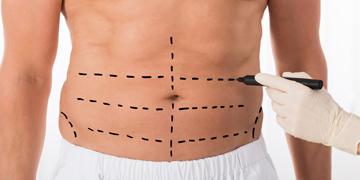
Tummy tuck procedure includes the following steps:
- Anesthesia
Medications are administered for your comfort during the surgical procedures. The choices include intravenous sedation and general anesthesia. Your doctor will recommend the best choice for you.
- The incision
A full tummy tuck requires a horizontally-oriented incision in the area between the pubic hairline and belly button. The shape and length of the incision will be determined by the amount of excess skin. Once the abdominal skin is lifted, the underlying weakened abdominal muscles are repaired. A second incision around the navel may be necessary to remove excess skin in the upper abdomen.
- Closing the incisions
Sutures, skin adhesives, tapes or clips close the skin incisions.
- See the results
Your tummy tuck will result in a flatter, firmer abdominal contour that is more proportionate with your body type and weight. Get more information about tummy tuck results.
Liposuction
Liposuction is a surgical procedure that uses a
suction technique to remove fat from specific areas of the body, such as the abdomen,
hips, thighs, buttocks, arms or neck. Liposuction also shapes (contours) these areas.
There are two types of Liposuction surgeries : laser and mechanical.
Other names for liposuction body contouring.
isn't typically considered an overall weight-loss method or a weight-loss
alternative. If you're overweight, you're likely to lose more weight through diet and
exercise or through bariatric procedures — such as gastric bypass surgery — than you
would with liposuction.
You may be a candidate for liposuction if you have too much body fat in specific spots
but otherwise have a stable body weight.
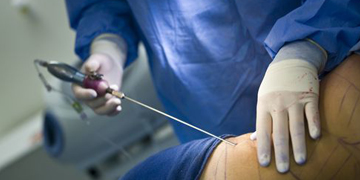
During liposuction:
Your specific procedure depends on the type of liposuction you’re having. It may be an outpatient procedure at your provider’s office. Or you may go to a surgery center. If your surgeon is removing large amounts of fat, you’ll go to a hospital and may need to stay overnight. Even for an outpatient procedure, you will need someone to drive you to and from the surgery. How long liposuction surgery takes depends on how much fat your surgeon is removing.
Before the procedure, you get anesthesia. You may have local (just in the surgical area) or general anesthesia (which puts you to sleep). Then your surgeon:
- Uses a suction device attached to a small, stainless steel instrument called a cannula.
- Makes small incisions and inserts the cannula into the fatty areas between skin and muscle.
- Removes excess fat with a suction pipe or large syringe.
Breast augmentation surgery
Breast augmentation, sometimes referred to as a "breast aug" or "boob job" by patients, involves using breast implants or fat transfer to increase the size of your breasts. This procedure can also restore breast volume lost after weight reduction or pregnancy, achieve a more rounded breast shape or improve natural breast size asymmetry.
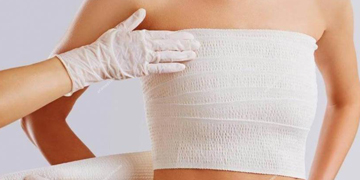
To insert the breast implant, your plastic surgeon will make a single cut (incision) in one of three places:
- The crease under your breast (inframammary)
- Under your arm (axillary)
- Around your nipple (periareolar)
After making an incision, the surgeon will separate your breast tissue from the muscles and connective tissue of your chest. This creates a pocket either behind or in front of the outermost muscle of the chest wall (pectoral muscle). The surgeon will insert the implant into this pocket and center it behind your nipple.
Saline implants are inserted empty and then filled with sterile salt water once they're in place. Silicone implants are pre-filled with silicone gel.
When the implant is in place, the surgeon will close the incision — typically with stitches (sutures) — and bandage it with skin adhesive and surgical tape
Breast reduction surgery
Breast reduction surgery, also known as reduction mammaplasty, is a procedure used to remove excess fat, tissue and skin from the breasts. If you have large breasts, you might choose to have breast reduction surgery to ease discomfort or to achieve a breast size proportionate to your body
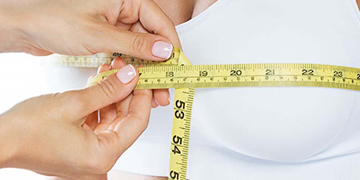
The specific technique used to reduce the size of your breasts can vary. The procedure might include:
- Surgery through incisions
- Liposuction to remove the excess fat in your breasts
The surgeon usually:
- Makes an incision around the areola and down each breast
- Removes excess breast tissue, fat and skin to reduce the size of each breast
- Reshapes the breast and repositions the nipple and areola
The nipple and areola:
- Usually remain attached to the breast
- Might need to be removed and then reattached at a higher position as a skin graft if your breasts are very large
Your surgeon will try to achieve symmetry between your breasts, but some variation in breast size and shape might occur. The size of the areola also might be reduced. Your incision scars might fade over time but will never completely disappear.
Breast lifting surgery
A breast lift — also known as mastopexy — is a surgical procedure performed by a plastic surgeon to change the shape of your breasts. During a breast lift, excess skin is removed and breast tissue is reshaped to raise the breasts. You might choose to have a breast lift if your breasts sag or your nipples point downward. A breast lift might also boost your self-image and self-confidence. A breast lift won't significantly change the size of your breasts. However, a breast lift can be done in combination with breast augmentation or breast reduction.
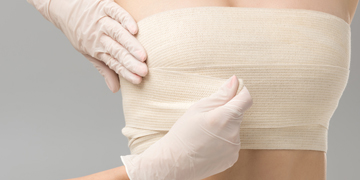
Procedure
Surgeons perform a breast lift using a few different procedures. Which technique your doctor uses depends on the size and shape of your breasts, and how much lift you need.
Before your procedure, your surgeon will probably ask you to stop taking certain medications. These include drugs like aspirin that thin your blood. If you are a smoker, you’ll need to stop smoking about four weeks before your procedure. Smoking can interfere with your body’s ability to heal after surgery. It can cause serious wound-healing problems such as loss of your nipple or breast skin.
In general, the surgery involves these steps:
- You’ll be marked by the surgeon in the standing position to determine the new lifted position of the nipple on your breast.
- You’ll get medicine called anesthesia to relax you and relieve pain. You’ll be asleep during the surgery. This is called general anesthesia.
- The surgeon will make an incision (cut) around the areola. The cut will usually extend down the front of your breast, from the bottom of the areola to the crease. It may also extend along the sides of the areola.
- The surgeon will lift and reshape your breasts. Afterward, the surgeon will move your areolas to the correct position on the new breast shape, and may also reduce their size.
- The surgeon will remove any extra skin to give your breasts a firmer appearance.
- Finally, the surgeon will close the incisions with stitches, sutures, skin adhesives, or surgical tape. Surgeons usually try to place incisions in parts of the breast where they will be less visible.
You may decide to have breast implants at the same time as a breast lift. An implant can increase the size or fullness of your breasts. For safety reasons, some surgeons will not do the two procedures at the same time. If this is the case, you’ll first undergo the lift, with the augmentation followed weeks to months later. This “staging” is to prevent any loss, or necrosis, of the nipple.
